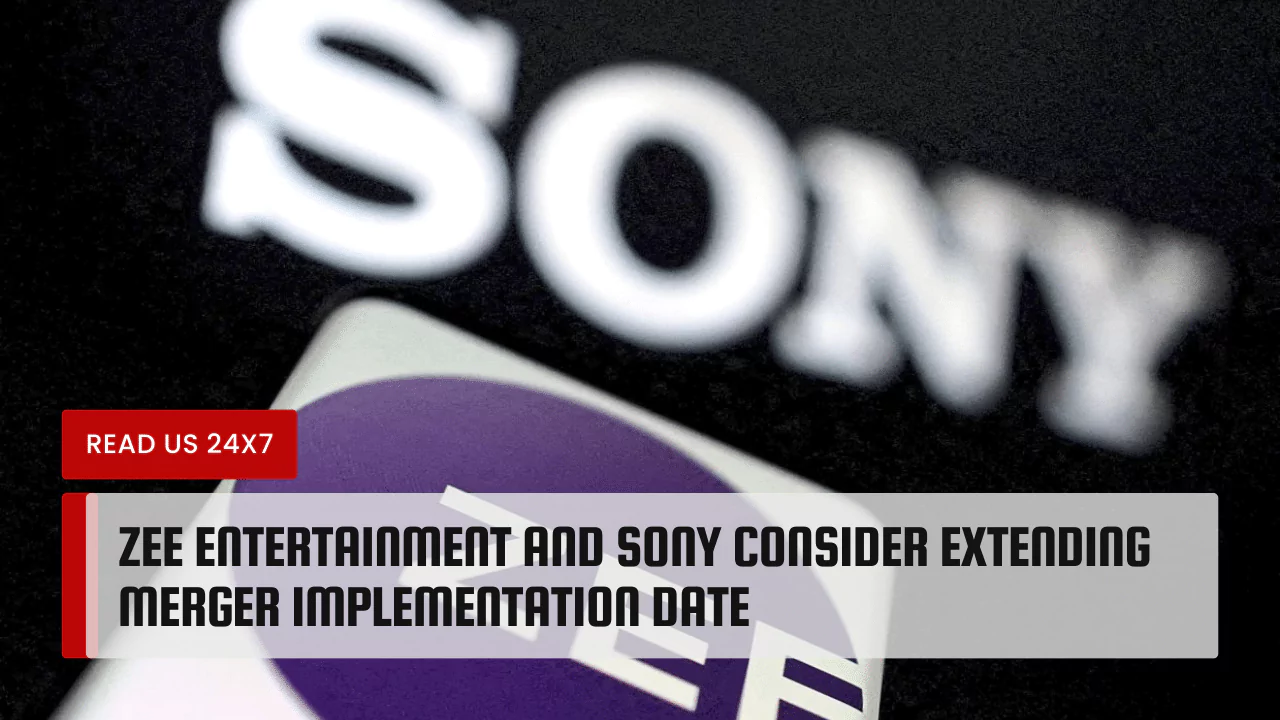Zee Entertainment and Sony Pictures Networks India (SPNI) have agreed to extend the deadline for their $10 billion merger by 30 days, after failing to find common ground in negotiations. The merger, which was announced on December 21, 2021, is expected to create a media powerhouse in India, with more than 75 television channels, film assets and two streaming platforms. However, the deal has faced several hurdles and delays due to differences between the two sides and the impact of Covid-19 on the media industry.
Background of Zee and Sony Merger
The merger between Zee and Sony was first announced in October 2021, when Sony agreed to acquire a majority stake in Zee’s Indian operations for $1.57 billion. The deal was seen as a strategic move by Sony to expand its presence in India’s fast-growing entertainment market, which has more than 900 million TV viewers and some 800 channels. Sony also hoped to leverage Zee’s pan-India reach, especially in small towns and regional markets, where it lacks a strong foothold.
However, the merger faced several challenges and opposition from various stakeholders, including regulators, shareholders, employees, and competitors. Some of the issues that cropped up during the negotiations were:
- The valuation of Zee’s assets: Zee claimed that its valuation was undervalued by Sony, while Sony argued that it had offered a fair price based on market conditions.
- The integration of operations: Both companies had different business models and cultures, which posed difficulties in integrating their operations across platforms and regions.
- The regulatory approvals: The merger required approval from various authorities in India, such as the Competition Commission of India (CCI), the Ministry of Information and Broadcasting (MIB), the Reserve Bank of India (RBI) and others. However, some of these approvals were delayed or denied due to concerns over market dominance, media plurality, and national security.
- The COVID-19 pandemic: The pandemic has severely affected the media industry in India, causing revenue losses, job cuts, and content disruptions. Both companies had to adapt to the changing consumer preferences and digital trends amid the crisis.
Zee and Sony Enter into a Discussion
Despite these challenges, both companies decided to enter into a discussion period after announcing their merger agreement on December 21, 2021. They conducted mutual due diligence during this period to assess each other’s strengths and weaknesses. They also agreed to extend their deadline for closing the deal by one month from December 31, 2021, to January 31, 2022.
According to sources cited by CNBC TV18, there is no provision in the current contract for extension of the agreement beyond January 31. However, both companies are willing to make one last attempt to save the merger before it expires.
Reasons for Delay in Merger
The main reason for delaying the merger is that both companies have not been able to reach a consensus on some key aspects of their deal. Some of these aspects are:
- The valuation of Zee’s assets: As mentioned earlier, Zee claimed that its valuation was undervalued by Sony while Sony argued that it had offered a fair price based on market conditions.
- The integration of operations: As mentioned earlier as well, both companies have different business models and cultures which pose difficulties in integrating their operations across platforms and regions.
- The regulatory approvals: As mentioned earlier, the merger requires approval from various authorities in India which have been delayed or denied due to concerns over market dominance, media plurality, and national security.
- The COVID-19 pandemic: As mentioned earlier, the pandemic has severely affected the media industry in India causing revenue losses, job cuts, and content disruptions. Both companies have had to adapt to the changing consumer preferences and digital trends amid the crisis.
Potential Benefits of Zee-Sony Merger
The Zee-Sony merger, if successful, will bring several advantages for both companies and for the Indian entertainment industry in general. Some of these advantages are:
Creation of a $10 Billion Media Giant
The combined entity will be majority-owned by Sony Pictures Networks India (SPNI), which will be led by Zee’s CEO Punit Goenka after a 90-day due diligence period. It will be one of the biggest media companies in Asia, with revenues expected to surpass $10 billion. It will also be one of the few Indian-owned global players with a significant international presence.
Improved Market Position and Offerings
The combined entity will have more than 75 TV channels, film assets, and two streaming platforms (ZEE5 and Sony LIV). It will offer a diverse range of content across genres such as drama, comedy, news, sports, kids, and reality shows. It will also have a large distribution network across India, with more than 70 TV channels, 2 video streaming services, and two film studios (Zee Studios and Sony Pictures Films India), making it the largest entertainment network in India. It will have a strong presence in both urban and rural markets, where it can cater to the varied and changing consumer preferences.



